Establishment of Bhikkuni Sasana in Lanka by Venerable Sanghamitta
Posted on December 27th, 2012
Article 15
Arrival of Venerable Sanghamitta
Following the establishment of Buddhism in Lanka by Arahat Mahinda, brother of venerable Sanghamitta in 267 BCE, the new doctrine established well land speared rapidly in the island.ƒÆ’-¡ƒ”š‚ Wife of the king Devanampiya-Tissa, queen Anula and several other Lankan women expressed their desire to enter the Order of Disciples as nuns.ƒÆ’-¡ƒ”š‚ Consequently, King Devanampiya-Tissa sent a team of couriers to Emperor Asoka, led by his nephew Arittha, to obtain his assistance establishing female disciples in Lanka; enabling Lankan women to obtain ordination.ƒÆ’-¡ƒ”š‚ Personal message was sent to the Emperor via king Devanampiya-TissaƒÆ’‚¢ƒ¢-¡‚¬ƒ¢-¾‚¢s nephew, minister Arittha, to the Mauryan capital, including a request to bring a Bo-sapling from the Bodhi Tree at Buddhagaya under which the Buddha attained enlightenment.ƒÆ’-¡ƒ”š‚ Emperor Asoka promptly sent a message to him and to his son, venerable Mahinda on his plan to send a bhikkhunis to Lanka.ƒÆ’-¡ƒ”š‚ Emperor was very
pleased that his mission to promulgate Buddhism in Lanka was a success and that the king and people of Lanka had accepted the new doctrine with enthusiasm, as he did in India.ƒÆ’-¡ƒ”š‚ Sanghamitta was the daughter of Emperor Asoka and his queen Devi, a Buddhist.ƒÆ’-¡ƒ”š‚ Emperor Asoka sent revered Sanghamitta, the sister of venerable Mahinda to Lanka.
In addition to the establishment of the Bhikkuni Order by Sanghamitta theri, arrival of the theri further boosted the respect and the leadership of women in Lanka.ƒÆ’-¡ƒ”š‚ During this time in India, while the Bhikku Order was well established, the widespread Brahmin society at times suppressed the Bhikkuni Order, and consequently, the role of women became less prominent in India.ƒÆ’-¡ƒ”š‚ In contrast, in Lanka at that time, women had more or less equal rights and respect, and this further facilitated the establishment and propagation of the Bhikkuni Sasana in Lanka.ƒÆ’-¡ƒ”š‚ Moreover, since the historic arrival of venerable Mahinda that brought the teachings of the Buddha, King Devanampiya-Tissa and the Lankans had the opportunity to listen and understand the key elements of Dhamma.ƒÆ’-¡ƒ”š‚ This was exemplified by the request from the king to venerable Mahinda to the Emperor Asoka, regarding the request of the Queen Anula and others to become bhikkhunis.ƒÆ’-¡ƒ”š‚ Only Bhikkhunis are permitted to ordain women; thus, at the urging of venerable Mahinda, Emperor Asoka agreed to send his daughter, Sanghamitta theri to Lanka.
Additional significance of the visit:
Venerable Sanghamitta went to Lanka together with several other nuns to start the lineage of bhikkhunis; a fully ordained female Buddhist monastic.ƒÆ’-¡ƒ”š‚ After SanghamittaƒÆ’‚¢ƒ¢-¡‚¬ƒ¢-¾‚¢s contribution to the propagation of Buddhism in Lanka and her establishment of the ƒÆ’‚¢ƒ¢-¡‚¬ƒ…-Bbhikkuni (meheni) SasanaƒÆ’‚¢ƒ¢-¡‚¬ƒ”š‚, Order of Nuns, her name became synonymous with the Buddhist Female Monastic Order of Theravada Buddhism that was established not only in Sri Lanka but later also in Burma, China, and Thailand.ƒÆ’-¡ƒ”š‚ Consequently, the Full Moon day of December, known as “Uduvapa Poya,” “Uposatha Poya,” considered as the “Sanghamitta Day,” is celebrated with processions by Theravada Buddhists in Sri Lanka.
Transportation of the Sacred Bodhi Tree to Lanka
Emperor Asoka arranged to specially prepare a branch of the Sacred Bodhi Tree and sent it to Lanka.ƒÆ’-¡ƒ”š‚ He planted the branch in a golden vessel, and let it taken its roots.ƒÆ’-¡ƒ”š‚ In addition to his daughter venerable Sanghamitta, he also sent several caretakers to accompany the Bo-tree, and additional group of female monks in this mission.
The chronicles mention that the king arranged to select these attendants from disperses of Brahmans, nobles, and similar households consisting of 64 families.ƒÆ’-¡ƒ”š‚ Theri Sanghamitta and her attendants embarked on the ship, as did several ambassadors and messengers who came from Lanka to accompany them.ƒÆ’-¡ƒ”š‚ Venerable Sanghamitta brought the Sacred Bodhi Tree with her to Lanka.
According to the legend, the ship sailed from Taamralipti (Tamluk) and arrived at a port in Lanka seven
days later.ƒÆ’-¡ƒ”š‚ The port, known as Jambukola, was situated in the north of the island.ƒÆ’-¡ƒ”š‚ The king of Lanka, on hearing of the arrival of the ship, had the road from Jambukola to the capital city of Anuradhapura gaily decorated.ƒÆ’-¡ƒ”š‚ King himself arrived and took charge of the Sacred Bodhi Tree. ƒÆ’-¡ƒ”š‚ The tree was planted in the Mahaameggha garden (Maha-meuna uyana) in Anuradhapura with great festivities.ƒÆ’-¡ƒ”š‚ The tree continues to flourish as one of the most sacred objects of veneration and worship for millions of Buddhists.ƒÆ’-¡ƒ”š‚ It is one of the oldest documented trees in the world.
In the succeeding years, there was increasing religious and spiritual activities throughout the island.ƒÆ’-¡ƒ”š‚ Together with the Buddhism, peace and prosperity spread accord the country to every town and village, with the villagers voluntarily and enthusiastically embracing the new doctrine.ƒÆ’-¡ƒ”š‚ At the same time, a large number of men and women became Buddhist monks, and consequently, viharas, chetiyas, and other religious edifices were constructed throughout the island to accommodate them.
Establishment of the Buddha Sasana
The king’s nephew Arittha, who went to meet the Emperor Asoka, entered the Order of Monks with the blessings of the King Devanampiya-Tissa; he entered with 500 other men, and all have thought to became Arahats.ƒÆ’-¡ƒ”š‚ With the ordination of queen Anula and the other women, both the Bhikku Sasana and the Bhikkhuni Sasana were firmly established in the
ThambapannaƒÆ’‚¢ƒ¢-¡‚¬ƒ¢¢”š¬‚¢Lanka island.ƒÆ’-¡ƒ”š‚ The king built separate residences for monks and nuns.
The scared Bo-sapling was planted in the Mahamevuna Park in 288 BC, followed by the mission of ordaining Queen Anula Devi and 500 Lankan women by venerable Sanghamitta.ƒÆ’-¡ƒ”š‚ As per the legend, Queen Anula had reached Sothapanna stage, a higher spiritual status, after attending several sermons given by venerable Mahinda and Sanghamitta.ƒÆ’-¡ƒ”š‚ The king gave his full blessings to expand the BuddhaƒÆ’‚¢ƒ¢-¡‚¬ƒ¢-¾‚¢s teachings and practices in Lanka, in particular meditation.ƒÆ’-¡ƒ”š‚ He created buildings that are large enough to accommodate more than 500 bhikkus or bhikkunis, where they could engage in meditation, Dhamma discussions and teachings.ƒÆ’-¡ƒ”š‚ In fact, in one of the first Pali Chronicles in LankaƒÆ’‚¢ƒ¢-¡‚¬ƒ¢-¾‚¢s history, the Dipavamsa was written by a group of bhikkhunis in the 4th century.ƒÆ’-¡ƒ”š‚ Within a short period, Anuradhapura became the intellectual hub for Theravada Buddhism, worldwide.
In addition to the Sacred Bodhi Tree, the Thuupaaraama-seya, enshrining the right collarbone and other bodily relics of the Buddha, was built for the devotion of the laity and the royals.ƒÆ’-¡ƒ”š‚ When these acts of religious devotion were accomplished, the king asked venerable Mahinda whether the Buddha Sasana had been firmly established on the island.ƒÆ’-¡ƒ”š‚ He replied, ƒÆ’‚¢ƒ¢-¡‚¬ƒ…-Buddha Sasana has only been planted, but would take firm root when Hela persons in Lanka studied the Vinaya and expounded it in Lanka.ƒÆ’‚¢ƒ¢-¡‚¬ƒ”š‚
Arittha Thera was well noted for his holiness, intelligence, and his extensive learning.ƒÆ’-¡ƒ”š‚ A year later, he was invited to give a discourse on the Vinaya in the presence of venerable Mahinda.ƒÆ’-¡ƒ”š‚ His exposition was so excellent and pleasing that it was declared to have fulfilled all the condition required for the firm establishment of the Sasana in Lanka.
Monks from Lanka have played a key role in maintaining, facilitating, and the dissemination of Theravada Buddhism throughout Southeast Asia and worldwide.ƒÆ’-¡ƒ”š‚ Historically, Hela monks have consistently introduced and re-introduced Buddhism to other countries.
Some of these missions include the following: in 426 AD, 11 bhikkunis went on a mission to China under Davasara Thisarana theri; in 429 AD, there was a mission to Tibet with Chandramali theri and later one to Thailand, and many others.ƒÆ’-¡ƒ”š‚ Nevertheless, the Bhikkuni sasana originated in Lanka by Sanghamitta theri vanished with the fall of Anuradhapura in 1017 AD, when the
capitol moved elsewhere, and had to be re-introduced from Burma.ƒÆ’-¡ƒ”š‚
Buddhism teaches us a righteous way of life and spirituality; how to live in peace and harmony with self, others, and the environment according to Dhamma.ƒÆ’-¡ƒ”š‚ ƒÆ’-¡ƒ”š‚ There are no rituals in Buddhism.ƒÆ’-¡ƒ”š‚ The caste system, rituals and poojas were introduced to Lankans much later; a result of some Hela princes marrying Indian princesses and consequently, creating Hindu ashrams next to certain Buddhist temples.ƒÆ’-¡ƒ”š‚ However, these have nothing to do with the Authentic Theravada Buddhism.
Five-centuries of colonial rule in recent history, forced Lankans to rely on outside sources and forces, than on self-reliance.ƒÆ’-¡ƒ”š‚ Consequently, during that period there were some erosions of the self-confidence and self-respect of the nation as a whole.ƒÆ’-¡ƒ”š‚ However, there were few key Lankans both lay people and Buddhist monks came forward at critical times as Lankan history repeats, rescue not only the Buddhism, but also the country and its sovereignty.ƒÆ’-¡ƒ”š‚ Fortunately, the Buddhism and the associated spirituality is now growing again at a faster phase, especially among the younger generation.ƒÆ’-¡ƒ”š‚ There is no doubt that the Buddhism, its peaceful teachings, and the Buddhist philosophy will thrive in Lanka.
Solitude is happiness for one who is content, has heard the Dhamma and clearly sees;
Cordial non-violence is happiness in this world, harmlessness towards all living beings.
Udana 10
Note: Some of the material, pictures, poems, and stanzas in these writings may have been published previously, including on the Internet (such as http://what-buddha-said.net and Buddha.direct.net) or obtained from various sources (modified with permission). ƒÆ’-¡ƒ”š‚ The author sincerely thanks all contributors of such materials for their generosity. ƒÆ’-¡ƒ”š‚ We anticipate that the brief articles on meditation, Buddhism, and Buddhist philosophy that appear in this column will initiate additional contributions, and healthy and positive discussions.ƒÆ’-¡ƒ”š‚
May the Noble Triple Gem bless you ƒÆ’-¡ƒ”š‚
Sunil J. Wimalawansa
Professor of Medicine, Endocrinology, Physiology & Integrative Biology
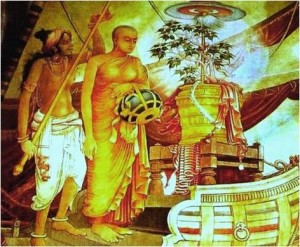
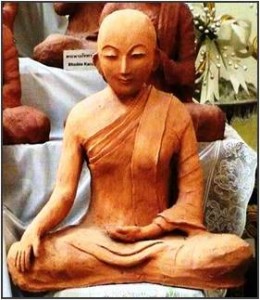
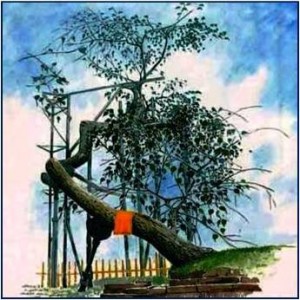

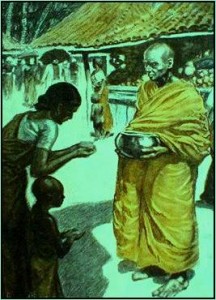
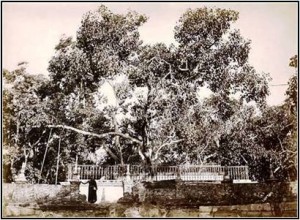
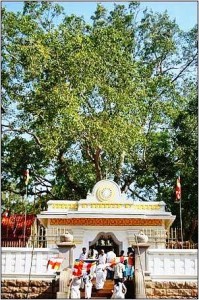
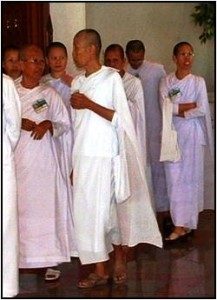

December 27th, 2012 at 8:08 pm
i wish the writer had also explained that the Bhikkuni Sasana was First introduced and established in China by Theravada Buddhist Female Monastic Order from Lanka.